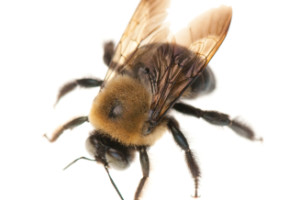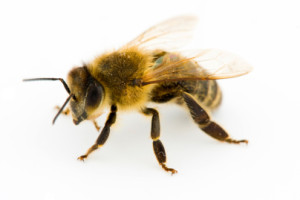
Large, rounded and hairless bees with loud flight; bulbous, compound eyes
ColorShiny and black abdomen; translucent wings
SizeApproximately 3/4 - 1 inches long
HabitatUnfinished softwoods make the ideal habitat
Interesting FactsAdults wait out the winter months in previously constructed nests

Large, rounded and covered in fine hairs; bulbous, compound eyes
ColorReddish brown with yellowish-orange bands around its body; appendages and head are black
SizeApproximately 3/4 - 1 inch long; the queen bee can be larger
HabitatWithin their hives in a range of environments
Interesting FactsHoney bees are not native to America; they arrived with early European settlers